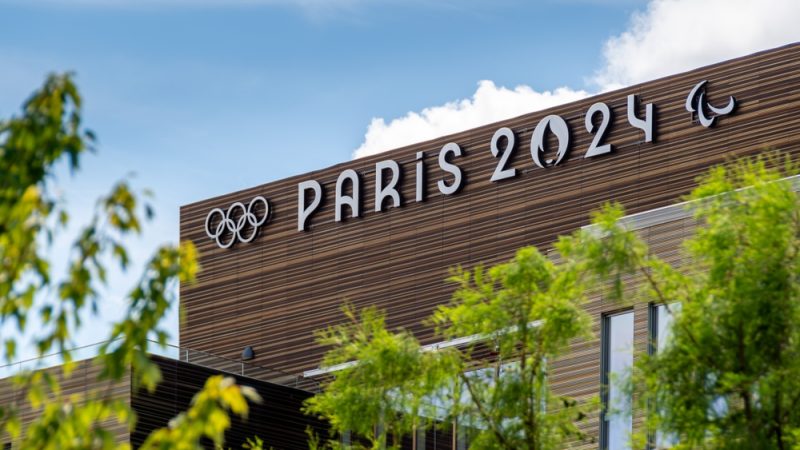The Paris Olympics chose low-carbon construction and reuse of existing facilities as sports infrastructure. The goal is to generate half the emissions of the Rio and London Games.
Organizers aim to meet the limits set in the COP21 climate change agreement signed in Paris in 2015. WWF, with which the Olympic Committee signed an agreement in 2016, is monitoring the situation closely.
To achieve this goal, the Olympic Committee selected several innovations, especially regarding buildings.
The best way to avoid carbon emissions is to not build new infrastructure. As in the UK in 2012, 95% of event space will be in existing facilities. This does not exclude some changes, such as the marina in Marseille in the south of France, where the Olympic sailing competitions will be held.
Only a small amount of new infrastructure will need to be fully built and maintained after the Games, including the Olympic Aquatic Center, the Olympic Village outside Paris to house athletes and staff, and the arena in the city center.
Compatible with the 2050 Olympic Village
The centerpiece of the Olympics, the Olympic Village, will probably be used to test some innovations that will be needed to adapt buildings to the climate of Paris in 2050, which is comparable to the summer climate of Seville today. Become.
“We have set ourselves the goal of achieving 10 years ahead of regulatory targets aimed at putting cities and the building sector on the path to carbon neutrality by 2050,” said Director of Strategy and Innovation at Solideo. explains Mr. Antoine du Souich in Les Echos.
To achieve this, builders focused on using wooden structures for buildings less than 28 meters in height. Above 28 meters in height, safety regulations prohibit the use of wood in structures.
The concrete used is “low-carbon” or even “ultra-low carbon” and the prefabricated concrete slabs incorporate bio-based materials, the builder explained. For building interiors: wooden floors, cardboard bed bases, etc. There's a lot of innovation.
Please note that there is currently no agreed definition of “low carbon” concrete. Accurately assessing the environmental benefits of unconventional concrete is difficult.
Furthermore, buildings and roads in this area are equipped with rainwater collection and utilization systems and outdoor air treatment systems.
Ultimately, “the accumulation of innovative approaches in the Olympic Village has made it possible to reduce the carbon footprint of the construction process by 50% compared to the traditional scenario,” said Christophe Besh, France's Minister of the Environment. he said.
Debris from the site will also be removed by the river, eliminating the need for tens of thousands of trucks to travel back and forth. At the same time, 75% of this material is recycled.
concave olympic pool
On the outskirts of Paris, French President Emmanuel Macron inaugurated the Olympic Aquatics Center in Saint-Denis, near the Stade de France, on April 4 to great fanfare.
Featuring a 5,000 square meter concave roof, the architects gave it an original look and an environmentally friendly raison d'être by reducing the internal space heated by the adjacent data center.
Enough solar panels have also been installed to meet electricity needs. The frame is made of wood, but the bleacher seats are made from recycled plastic.
first arena
There has never been an arena of this size in Paris. “You can't fully decarbonize because it's impossible to fully decarbonize buildings. To achieve that goal, you don't have to build. We have reduced our carbon footprint by 30% to 50% compared to infrastructure,” said Christophe Rosa, Project Manager at Liberation.
Like the aquatic center, the seats will be made from recycled plastic. The 100% wooden frame is supported by walls, some of which are made of raw earthen bricks, a material that can recover heat and cold. Cotton provides warmth. The building's surface will be 80% recycled aluminum.
In addition, the enclosure draws air from the 200,000 vehicles that pass daily under the ring road adjacent to the arena, not to mention a geothermal station designed to meet the building's heating and cooling needs and other infrastructure needs. Filter. , Louvre Museum, etc.
This is a building that is ahead of the rules,” Antoine du Suyck, director of strategy and innovation at Solideo, the public organization responsible for building Olympic infrastructure, explained to Libération. It foresees not only the regeneration of the city, but also the regeneration of energy and the superior environment that will make the city of 2030,” he added.
In short, these OGs are a life-size test of numerous innovations designed to adapt cities to Europe's future climate, and the Paris Games will set the standard for future hosting of the world's biggest sporting events. Probably.
[By Paul Messad I Edited by Brian Maguire | Euractiv’s Advocacy Lab ]


